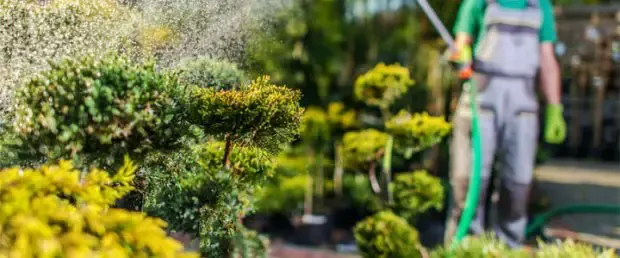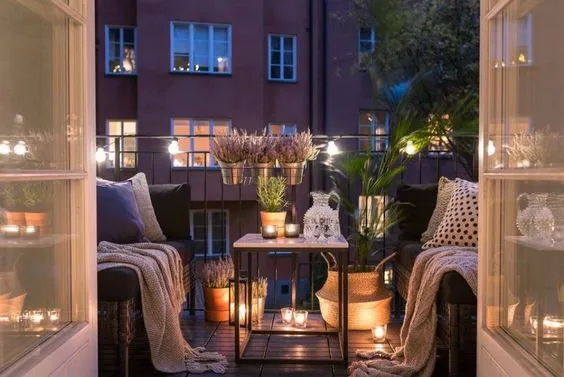There can be your advertisement
300x150
Growing Healthy Plants: Expert Tips and Tricks
There's nothing quite like the joy of growing your own food and flowers. Creating a healthy environment for your plants requires more than just adequate light, water, and nutrients. Other environmental factors and the unique needs of each plant can affect yield and flowering.
If you're struggling with your garden, the following tips will help improve your skills!
There's nothing quite like the joy of growing your own food and flowers. Creating a healthy environment for your plants requires more than just adequate light, water, and nutrients. Other environmental factors and the unique needs of each plant can affect yield and flowering.

If you're struggling with your garden, the following tips will help improve your skills!
Choosing Plants Perfect for Your Region
Easily fall in love with plants and fill your garden with exotic varieties of beautiful flowers and delicious harvests. Disappointment when they don't thrive often stems from poor climate or soil conditions. Some flowers require intense sunlight and specific levels of humidity and temperature for ripening. Growth can be slowed if any of these factors don't meet the plant's needs.
When visiting a flower shop or garden center to select plants for your garden and beds, ask which varieties are suitable for your zone. Also, find out what local pests exist and choose vegetables and flowers that naturally resist them.
Creating a Safe Growing Environment
Now that you know which plants best suit your garden, create an environment to support their growth. Remember that young seedlings are fragile and need time to build resistance against wind and rain. Start them in a greenhouse or growing tent and install a fan to gently circulate air and strengthen the plants.
Before transplanting them into larger pots or garden beds, ensure they receive enough light if needed and shade where it's not. Try to choose a spot that isn't exposed to strong gusts of wind and is well-protected from damage.
You should also consider drainage. If you notice water pooling, aerate compacted soil to allow excess moisture to drain away. This step can reduce the likelihood of mold and root rot.
Creating Nutrient-Rich Soil
If your plants aren't thriving despite being suitable for your region, the issue may be soil pH or nutrient deficiency. Adding compost to the ground and leaving it over a season helps replenish missing minerals and organic matter essential for plant survival.
Remember that the root system absorbs nutrients and supports growth. Therefore, foliar feeding may not have a significant effect and can even burn leaves.
Strategic Planting Planning
Plant placement and spacing are often overlooked aspects of gardening. You can usually plant densely or in rows. The first method involves close planting with minimal space between mature leaves. As a result, you'll get a larger yield and fewer weeds, although any found will have to be pulled by hand due to limited space for garden tools.
If you choose row planting, leaving at least 18 inches between them provides freedom of movement. This method makes maintenance easier since you can walk through the garden without stepping on your harvest.
Also, consider succession planting to avoid harvesting more than you need, which can lead to waste. This strategy involves sowing partial amounts every two weeks.
Creating a Regular Watering Schedule
Watering plants can be a challenging task. The general rule is to provide 1 to 1.5 inches of water weekly between rainfall and hose watering. The goal is to keep the soil moist to the roots but not waterlogged. Manual watering should occur once a week or broken into a bi-weekly schedule.
If you're planning to go on vacation for several days, don't rely on your plants being fine without you. Much can go wrong in a short time, so ask a friend or relative to come and water them.
Pest Control
It's no secret that many insects and animals love gardens. Many creatures benefit from your plants, such as earthworms and butterflies. Unfortunately, there are numerous pests that can infect and destroy your garden within weeks if not controlled:
- Aphids
- Thrips
- Caterpillars
- Whiteflies
- Leaf beetles
- Spider mites
- Moths
- Cutworms
- Flour moths
These are just a few of the many potential threats to your plant health. Although it's tempting to buy a pesticide that kills everything, you'll also lose pollinators like bees and butterflies. Without them, you won't get beautiful flowers, vegetables, or fruits from the plants you planted.
Be patient, identify insects suspected of causing problems, and use a product that directly targets the specific pest. This approach helps maintain a healthy ecosystem in your garden and promotes plant health.
Don't Fear Pruning
Plants are like people in that they regenerate their cells daily. Over time, old parts of their structure become unsupported and new growth begins. To help your plant maximize its energy use, prune overgrown or hard-to-manage sections. You already have new stems, leaves, and buds, so you're helping it thrive.
Use the Right Fertilizers
During the growing season, your plants continuously extract nutrients from the soil to support growth. However, you should still supplement this process and even boost production with fertilizers.
Before choosing a universal product for your entire garden, consider the different types of fertilizers and how they can help your plants:
- Organic Fertilizers use formulas derived from natural ingredients like compost, bone meal, and manure. These products are typically released slowly, providing steady nutrition for your plants and maintaining high soil quality.
- Synthetic Fertilizers have formulas containing artificial compounds aimed at the plant rather than the soil. They're released quickly and require frequent reapplication.
- Inorganic Fertilizers rapidly release minerals and nutrients and are made from minerals and chemicals found in the ground but not organic matter like manure or compost. However, they also release nutrients quickly and add some soil enrichment.
Main Takeaway
Many factors can determine whether a plant will be healthy or struggle to survive. From soil conditions to pest control and planting strategies, your garden requires constant attention and care to become a fertile patch of beautiful fruits, vegetables, and flowers. The eight tips presented in this article are essential for supporting plant health, so plan ahead before starting the growing season in your region to achieve the best results for your hard work.
More articles:
 Gardens and Real Estate Value
Gardens and Real Estate Value Gava-Maru, Beach Villa by A-cero: Icon of Modern Coastal Luxury in Catalonia
Gava-Maru, Beach Villa by A-cero: Icon of Modern Coastal Luxury in Catalonia Genti House | WARchitect | Bangkok, Thailand
Genti House | WARchitect | Bangkok, Thailand Modern Wooden Cabin Home Gerendák by Wittehaus in Charlotte
Modern Wooden Cabin Home Gerendák by Wittehaus in Charlotte Best Sleep with These Five Natural Sleep Products
Best Sleep with These Five Natural Sleep Products Create Spring Comfort: 15 DIY Ideas for Spring Planters
Create Spring Comfort: 15 DIY Ideas for Spring Planters Get Inspiration for Your Balcony with These Genius Tables
Get Inspiration for Your Balcony with These Genius Tables Use Creativity with Elevation Tables - Versatile Furniture for Every Room in Your Home
Use Creativity with Elevation Tables - Versatile Furniture for Every Room in Your Home